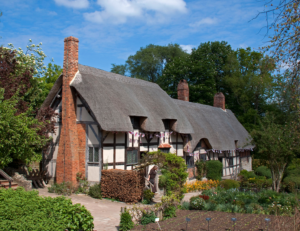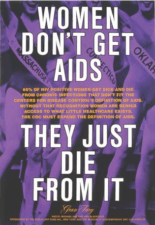This weekend, over 400 years ago, Anne Hathaway married William Shakespeare. This year, at last, Anne and her daughters Susanna and Judith were given their proper place in the Oxford Dictionary of National Biography.
In the late nineteenth century, Virginia Woolf’s father Leslie Stephen began work on the Dictionary of National Biography. Published quarterly between 1885 and 1900, the original DNB contained entries for 30,000 British subjects. The current version of the DNB, now the Oxford Dictionary of National Biography, has expanded to over 60,000 entries, but still, fewer than 3% of those entries are women.
Under commissioning editor Anders Ingram, Paul Edmondson (Shakespeare Birthplace Trust) and I made three contributions to increasing the representation of women in the ODNB, with new entries on the women connected to William Shakespeare: his wife of 34 years Anne Hathaway, and daughters Susanna Shakespeare Hall and Judith Shakespeare Quiney.
The criteria for inclusion in the ODNB involves two components: individuals who were “historically notable,” and who “shaped the life of the nation.” Perhaps it goes without saying that the “life of the nation” was shaped not only by the familiar names of history, but also by the many unsung and unacknowledged women who made a national and domestic “life” possible. Giving Anne and her two daughters their own place in a seminal reference work like the ODNB confers importance to women in family life, and to the crucial but often unacknowledged roles women have played in history.
Readers of the new ODNB entries will encounter Anne Hathaway Shakespeare not only as the wife of the famous poet, but also as an important early modern woman in her own right, one who likely ran a brewing business at the Shakespeare family home of New Place in Stratford, supervised cottage industries from her home, and managed the Shakespeare household while her husband was away in London carrying out his playwriting career. The marriage between Anne Hathaway and William Shakespeare was part of a well-established relationship between the two families, and was a good match for the poet. Anne was praised in a Latin epitaph on her grave as a pious and devout women, a good mother and “so great a gift,” a eulogy probably written by her daughter Susanna and meant to immortalize and preserve these qualities.
Susanna Shakespeare Hall, Shakespeare’s eldest daughter, was likely the author of her mother’s Latin epitaph, and was described on her own grave as “witty above her sex,” a trait she may have inherited from one or both parents. Susanna married physician John Hall in 1607, and probably worked alongside her husband in his medical practice. After her husband’s death in 1635, Susanna continued to live at New Place, where she was likely the one to entertain Queen Henrietta Maria there in 1643. John Hall’s extensive medical casebooks survive, and were recently brought to publication by Paul Edmondson (who also authored the ODNB entry on Susanna) and the late Greg Wells, but no writings of Susanna’s are extant aside from two signatures. It is tempting to imagine the lost history of Susanna Shakespeare Hall, and to ponder how and where her “wit” was expressed.
Judith Shakespeare Quiney, the twin sister of Hamnet (who died at age eleven), outlived all of the members of the Shakespeare family except for Elizabeth Barnard Nash, the daughter of John and Susanna Hall. Judith Shakespeare Quiney had three sons, including one intriguingly named “Shakespeare Quiney,” who would have been conceived while her father (his grandfather) was still alive, though all three sons died in their teens. Judith lived until age 77, and was still in Stratford-upon-Avon when the first visitors came to Stratford in search of details about her father. Apparently no one thought to consult Judith about her family history, and in 1662 she must have taken to her grave an incalculable amount of information about both her famous father and about their family. Perhaps it’s appropriate to think of this as an example of the cost of omitting women from history, and of the missed opportunities to document “the life of the nation” when women have traditionally been so underrepresented in seminal reference works.
It’s uncertain what Judith’s real story was, but Virginia Woolf’s reinvention of her as Shakespeare’s sister in A Room of One’s Own (1929) allows her to stand in for women who are “as adventurous, as imaginative, as agog to see the world” as men, but have not been given the same opportunities. Now, these Shakespeare women have struck out on their own, set free from their previous place in the ODNB, where they were subsumed within the entry on William Shakespeare (written by Peter Holland, and reportedly the longest one in the work). Giving Anne, Susanna, and Judith their own places in the ODNB also gives importance to the role of women in family life, and legitimizes their contributions to “the life of the nation.”
Katherine Scheil is a Professor of English at the University of Minnesota.
Image: Anne Hathaway’s Cottage, from wikicommons.


